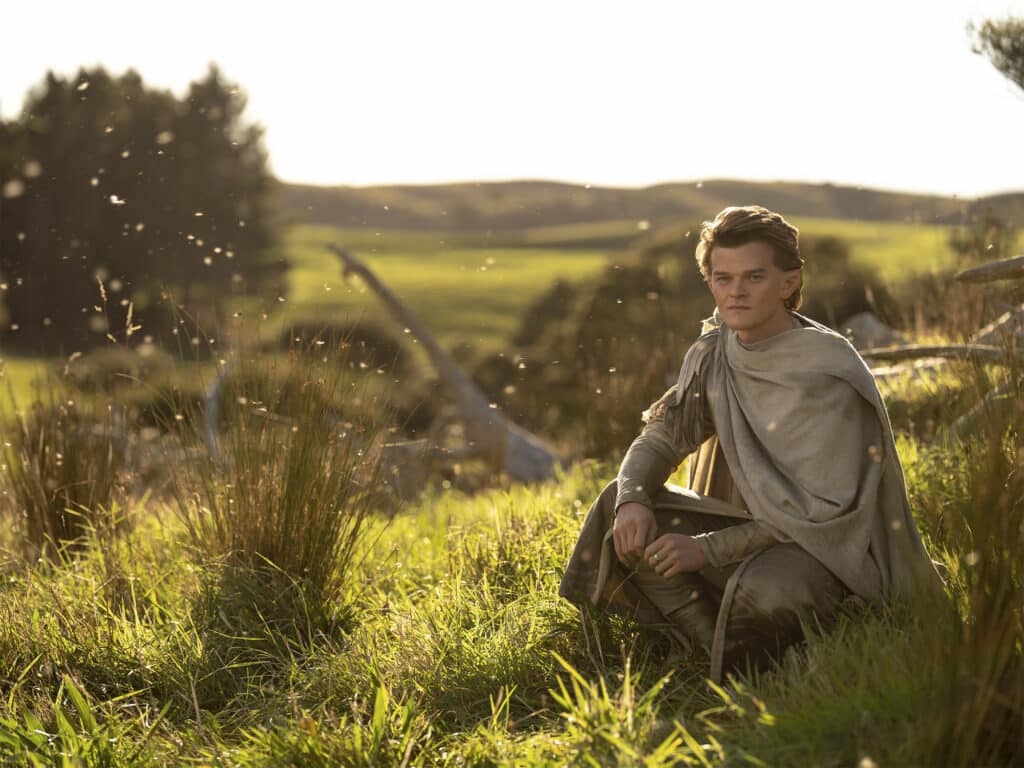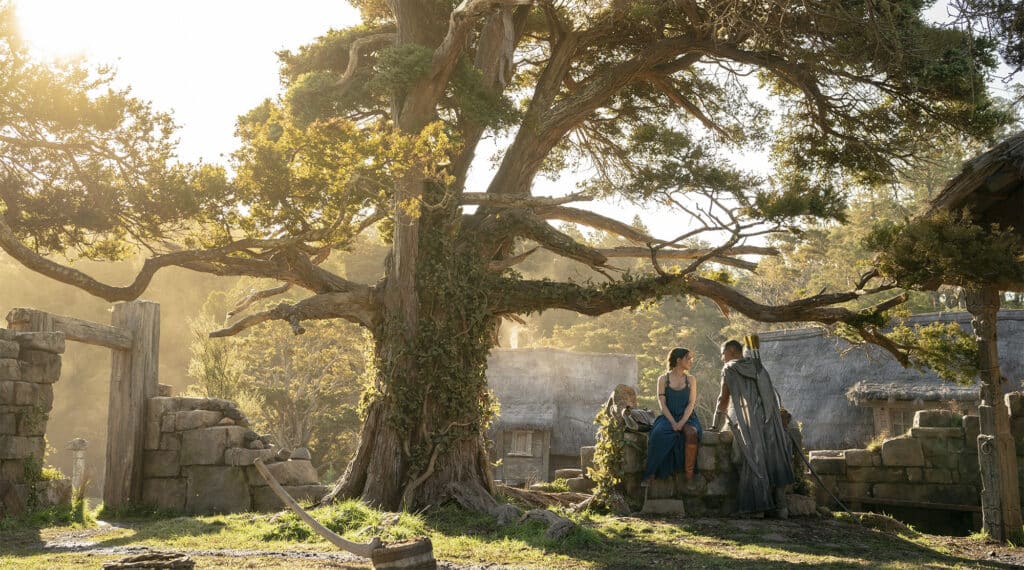Reading Time: 4 minutes
Amazon’s The Lord of the Rings: The Rings of Power, a culturally diverse take on JRR Tolkien’s Middle Earth, has divided critics and audiences for the ways it reflects our own world more than that of the Medieval Christendom on which The Lord of the Rings is based.
The new emphasis on the racial conflicts between Hobbits, Elves, Dwarves and Men, have been interpreted by some fans as being too “woke”.
Some have hurled unprovoked and terrible insults at the black actors and actresses portraying Elves, Dwarves, and Hobbits; creatures that belong to Norse mythology which is in the main “white”.
These racist attacks are a tragic mirror of the racial friction depicted in the show itself. But one wonders whether a more diverse Middle Earth was needed to correct the perceived “whiteness” of Tolkien’s vision.
It is a little-known fact that The Lord of the Rings was Tolkien’s attempt to rehabilitate Scandinavian mythology from its racist misuse by Adolf Hitler and the Nazis.
The Nazis had bastardised this mythology by appropriating runic characters and figures associated with the Nordic pantheon into their symbology.
Tolkien despised the narrow and violent antisemitic racism of the Nazis. In a 1941 letter he wrote that he had a “burning private grudge against that ruddy little ignoramus Adolf Hitler”.
“Ruining, perverting, misapplying, and making for ever accursed, that noble northern spirit, a supreme contribution to Europe, which I have ever loved, and tried to present in its true light.
“Nowhere, incidentally, was it nobler than in England, nor more early sanctified and Christianised.”

Inspired by the poet-lawmaker Snorri Sturluson, medieval sagas, and his love for the Judeo-Christian tradition, Tolkien incorporated elements of the Nordic myths into his own archetypal narrative.
The worldbuilding that Tolkien undertook for The Lord of the Rings included the rehabilitation of runes from the Nazis in the construction of a unique language—Elvish—not to mention a history of consecutive ages that is bracketed by a creation myth and an apocalypse.
So does the show actually “correct” Tolkien’s perceived racism? As he said about the Nazis: “There is a great deal more force (and truth) than ignorant people imagine in the ‘Germanic’ ideal.”
While the racial themes have been front and centre in commentary over the show, the lowering of Tolkien’s imagination is best illustrated by the show’s butchery of its most transcendent character: Galadriel.
Tolkien’s Galadriel can fell men, dwarves, and hobbits with a single glance on account of her beauty, while at the same time hiding a power that, if unleashed by the one Ring, could spell doom to Middle Earth.
The Lady of Lothlorien represents the archetypal feminine mystique, portrayed with elegance and poise by Cate Blanchett in Peter Jackson’s films.
Yet in The Rings of Power an unhappy Morfydd Clark, burning with vengeful rage over the death of her brother at the hands of Sauron, replaces Blanchett’s mystique with a much lower motif: the passionate warrior.
The justification for this contrast is that Galadriel is much younger (and presumably immature) in The Rings of Power; although even in this iteration she has been alive for 3422 years!
The Rings of Power is beautifully made. In fact, its aesthetic is very reminiscent of Peter Jackson’s films, almost deferring to them by way of homage.
But the creators seems to have missed the high archetypal influences at work in Tolkien’s Middle Earth, reducing them instead to “fantasy” as a genre or set of historical prejudices.

He was instead preoccupied with themes of universal significance: good versus evil, the hero’s journey, descent into Hell and resurrection.
These he incorporated into medieval-like Western Christian anthropology that heralded virtues such as courage, chivalry, guidance, discipleship.
Tolkien wanted his readers to be convinced that his work is grounded precisely in this sort of reality, and the wokeness of The Rings of Power—while certainly not justifying the unwarranted and cruel attacks on its cast—can be seen as a lowering of this vision to contemporary material and political concerns.
The Lord of the Rings is, to quote Tolkien himself, “a fundamentally religious and Catholic work”. It deals with archetypes that are drawn from the perennial wisdom of religion and mythology in a way that transcends all cultures and is thus relevant to readers in every generation.
This is why no matter what is done to Tolkien’s work posthumously by film executives hungry for a profit, we know that he famously resisted film adaptations of his works and that his intention for The Lord of the Rings was the moral and spiritual upbuilding of his readership.
It is in this spirit that it will continue to be read, well after the misuse of his work by corporate elites and “progressives” fades from memory.
Credit: Source link




